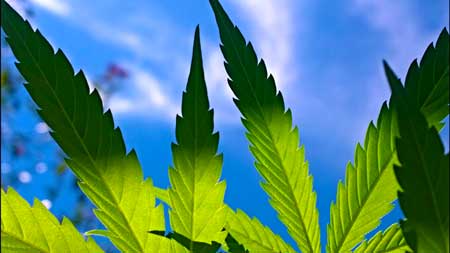Announcement
Collapse
No announcement yet.
Having A Light Source Too Close
Collapse
X
-
Thanks I know they like the Sun, they eat it right up. I’m going to figure it out thanks for the resources. My zone in April is 30-35 divide by 2 say is 15. Right now because they are juvenile in veg I only use 4 tubes that would be 10 uMol. iOS that correct? Also there is less morning light then afternoon it is close and a insignificant amount either way. Am I wrong?
1 PhotoLast edited by Paracelsus; 04-09-2018, 07:19 AM.
- Likes 1
Leave a comment:
-
Ask away, no problem.
It would depend where you are and what time of year it is. Using this visual graph you would take your locations DLI and halve it because you only recieve half the daily sunlight. Compare that value to the DLI of your fluorescents which is 25mol per day.
I would probably still use fluorescents regardless.
-
Thanks Dan I Believe 6.5 K to 7K is the range for what is called white daylight. Which gives me another query, I knew I shouldn’t write one more question LOL. In your opinion what is preferable, my 10 bank of T5 lights or direct sunlight through double pane thermal glass. I get direct eastern sunlight it till 12 noon on a sunny day it is spectacular but I’ve heard glass could take out the spectral rays. I know that I am asking a very technical question so I’m just asking your opinion thanks this is been an interesting morning have a great day.
-
Certain light technogies have varying levels of electrical efficiency with respect to certain wavelengths. This is why green LED diodes are not used because they have the lowest electrical efficiency. For fluorescents, different color temperatures will have slightly different photon flux values. Which is more efficient i do not know, however i would wager the higher the color temperature the more efficient. Because fluorescent lights naturally produce UV light and is converted to visible wavelenths through fluorescense. So the closer the wavelength to its natural output, the least energy is wasted. But i dont know for sure.
-
Thanks DD one more question, does frequency affect PPF. Is there any difference in PPF between 100 W 3K lamp and a 7K lamp or say one outside the visible to Humans light spectrum 12K
-
Fluorescent is about 0.8umol per watt. So each t5 will roughly have a photon flux (PPF) of 40umol. For 10 thats around 400umol. Thats equivalent to a 250w HPS.
You would hope that adding lights only increase the footprint, as that would mean that light uniformity is perfect. However light diverge and converge with eachother and so we we get a non uniform light output with typically a hotspot in the center just like you see in a torch. Trying to calculate what the intensity will be is not possible because of these variables. Without a meter you are best to apply the back off slightly method when you see light stress. Because of the low flux levels, you would probably be able to get pretty close.
I remember watching lost in space as a kid, i could never remember the name until you shared it ^.^
-
DrPhoton Subbed and understood
i have no meters I use the back of my hand right now till I do with my 4x48 T5 bank each tube is 54W 6500K
could you tell me the uMol for that and if I understand you right adding 6 more for a total of 10 bulbs will only increase the foot print but not the intensity. Is that correct?B9 ROBOT FROM LOST IN SPACE SAYING SOME OF HIS BEST QUOTES
Leave a comment:
-
I have updated this article for better readability and further information. Perhaps you might want to update your post with this. You may also wish to reread the article as there are valuable information regarding stages of growth and lights which i had not previously addressed.
-
I understand that the references of cannabis photosynthetic characteristics in micromols are useless to those who do not have quantum meters. As such i will provide tools to enable calculations of umols to lux. Where lux is the more common choice of measurement among growers.
Here you can apply conversion factors for light metrics such as photons in umols to lux. When applying the conversion you must select the right light source in order for accurate conversion factor. If you have an LED light source you can apply these conversions with satisfactory accuracy, if your LED system has white diodes. This is because the spectrum is very identical to that of high pressure sodium. If the color system is anything other than white, then the reliability of accuracy will go down.
For reference i will restate the cannabis photosynthetic characteristics in lux for HPS and white LED's.
Cannabis starts to saturate at around 500umols or 40,000 lux. The best range for photosynthetic efficiency is between 500-700umols or 40,000-58,000 lux. With the highest levels to be no higher than 1000umols or 80,000 lux.
Hope this is helpful.
- Likes 1
Leave a comment:
-
ah brilliant, as i put there dude my memory was hazy and couldnt remember where i had read about this subject.......then I got a message somebody posted on your thread and ping dude I remembered ....I was just going to post your article and say "there dudes!!!......thats what I read......good innit
....I was just going to post your article and say "there dudes!!!......thats what I read......good innit " ....fully accreditation to you of course dude haha....I couldn't write something like that haha
" ....fully accreditation to you of course dude haha....I couldn't write something like that haha


Leave a comment: